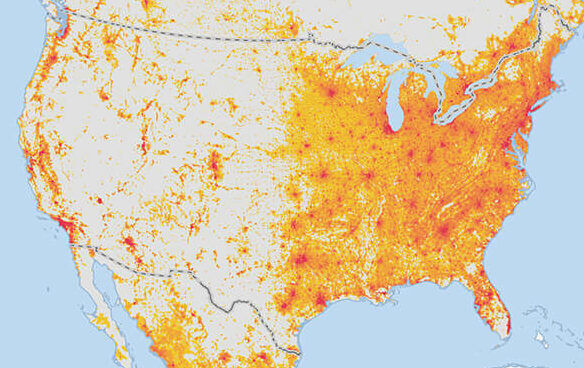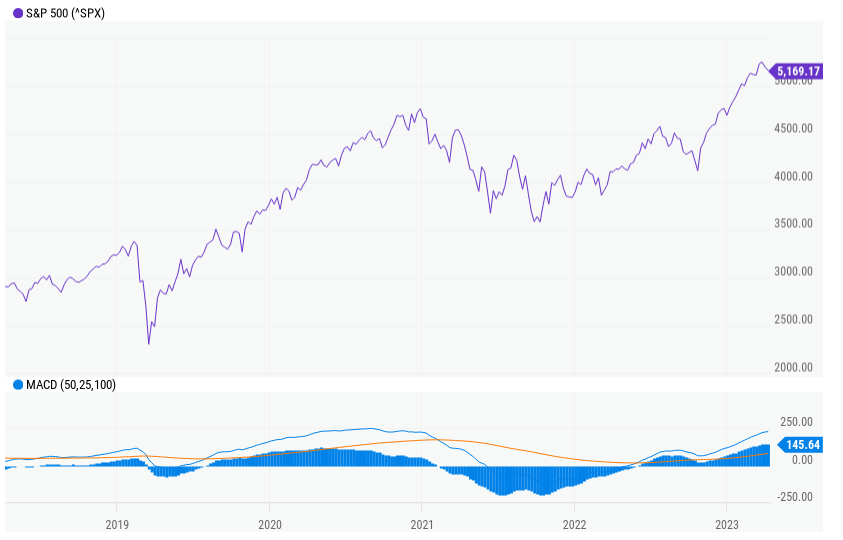Market Overview
This month's models have been posted. The rest of the newsletter will be posted by mid-month.
Don’t believe the hype around the Realtors’ settlement
As we’re sure you’ve heard, the National Association of Realtors recently agreed to a settlement that would lower its agents’ fees. While this will make buying or selling a home marginally less painful, America’s housing market remains a structural cluster bomb. Confining our focus to one aspect of this maddeningly complex system isn’t helpful. Yes, Realtors were forced to relent on their longstanding, sweetheart deal, but all of us piling on against them means the broader problems might continue to go unaddressed.
(A note on usage: NAR would appreciate it if everyone capitalized the word it coined to describe its members and remind everyone that it literally owns the word. We’re not going to play the REALTOR® game, and we’ll just capitalize the first letter. But we pass along to those reading aloud that they’d like you to put equal emphasis on each syllable: “Real-Tor,” not “Realt’r”.)
Terms of the deal
NAR will pay $418 million over four years to end litigation of claims brought on behalf of home sellers related to broker commissions. The agreement resolves claims against the trade group, its local associations, its one million-plus members and all associated multiple listing services. An MLS is an organization with a suite of services for real estate agents. While they’re most widely known for their databases of houses on the market, MLSs also act as clearinghouse for cooperation and compensation. NAR continues to deny any wrongdoing in connection with the MLS compensation model.
In addition to the financial settlement, which is pending court approval, NAR has agreed that offers of broker compensation can’t be communicated via the MLS, but they could continue to be an option for consumers. NAR further agreed to enact a rule that requires MLS participants to enter into written agreements with their buyers.
“Offers of compensation help make professional representation more accessible, decrease costs for home buyers to secure these services, increase fair housing opportunities, and increase the potential buyer pool for sellers,” according to NAR.
The agreement, according to the Wall Street Journal, is in response to “crippling antitrust liability since a Kansas City, Mo., jury delivered a $1.8 billion verdict against the organization and two national brokerages in October.” The jury found that industry rules for how buyers’ agents are paid were keeping commission rates artificially high. That case and others like it – most notably one in the Chicago courts – were filed by home sellers who argued they paid inflated costs – typically 6% split evenly between the buyer’s agent and the seller’s agent. By comparison, British estate agents typically get 1.3% on the sell side – and there’s no such thing as an agent on the buy side.
The Journal estimates that NAR’s total liability could have reached $4 billion absent the settlement. Even so, one industry analyst cited in the Journal article estimates that the annual cost of American real estate commissions, which now stands at around $100 million, could decrease by 30%, forcing many Realtors out of business.
It’s unlikely that any of this will have a direct, immediate impact on the housing market, though. Frankly, making agents scramble for a 4% commission rather than be granted 6% is chump change in the grand scheme of things.
You are here
What we lose track of when we focus on the agents is everything else wrong with the real estate market.
There is such a thing as a market failure, defined as an “inefficient distribution of resources that occurs when the individuals in a group end up worse off than if they had not acted in rational self-interest.” It happens all the time, and there are lots of causes and lots of solutions.
In this instance, there are a lot of moving parts, including:
- the supply of homes,
- the demand for homes,
- U.S. monetary policy,
- lender requirements, and
- tax incentives.
Any one of these could have far more impact on your monthly payment over the next 30 years than how much your Realtor pocketed on your most recent housing transaction.
Home prices have been rising – which is, after all and in principle, not a bad thing. Between 2013 and 2020, you could expect to pay around 5% more the next year for a home similar to one you could buy immediately. That was a little higher than the trend between 1988 – when these figures were first tracked via the Case-Schiller Index – and 2008. During the housing bubble that triggered the Great Recession, home prices rose almost 15% year-over-year. As we all found out together, that pace of appreciation was unsustainable.
So is the current wave of residential price shocks. Between spring 2021 and spring 2022, home prices soared more than 20% on average. Increases have moderated since then, but they’re still rising twice as fast as incomes.
The only thing keeping a lid on the price of buying a house is the price of taking on a mortgage. The Federal Reserve – starting in spring 2022 not by coincidence – initiated a string of 11 target interest rate hikes. As a result, 30-year fixed mortgage rates rose from around 3.5% to almost double that today. In historical terms, a mortgage rate of 7% isn’t all that bad. In fact, it’s in line with what you’d expect to pay on a note taken out as recently as the early 2000s. Even so, these rates are causing the current generation of homebuyers to shudder.
They’re also causing many homeowners who wouldn’t mind selling their houses to stay put. It takes a lot to motivate someone sitting on a 3.5% mortgage to swap it for a 6.75% one.
And let’s remember that, along with raising mortgage rates, loan officers tell the Fed that they’re also looking for higher credit ratings and bigger down payments. This makes getting even a high-interest note more difficult.
Demand for homes has long exceeded supply. CNN reported last year that we had 6.5 million fewer residential units than the U.S. needs, and this number is only going up. This is due to the gap between how fast we form households and how long it takes to build a home. And as long as we continue to slow the pace of construction by building two single-family homes for every apartment, that dynamic isn’t going to change.
Americans are obsessed with home ownership. We all want a bigger house than the one we grew up in, and in a better neighborhood. That’s not the case in much of the developed world. While the consensus American dream home contains four bedrooms and three bathrooms in 5,000 square feet of floor space, Europeans are content with three beds and two baths in 1,600 square feet.
American and European homebuyers participating in the 2018 survey did have a few things in common: They prefer a newly built home in the suburbs. Solar paneling is almost as popular here as it is in Europe. And very few people on either side of the Atlantic, if they’re being honest, really want to live on a golf course.
Still, this suggests that we can be downright extravagant when it comes to residential housing. We need more time and materials to create a single home as we elbow each other out of the way for the use of desirable land. And let’s not forget that commercial, industrial and public entities also need their share of the land, not to mention their share of construction crews.
Granted we have land to spare here, but we don’t live in it. Demographers refer to the “American Archipelago” of low population density across the West which only 2% of us call home. Lots of side streets come to a dead end right around the 99°W longitude mark.

Where we lived – and didn’t –in 2020. Do we have to show you Alaska? Credit: Columbia University
What makes the situation even worse is that a lot of new detached homes are going to investors, not to those who want to raise families in them. HousingWire, a data provider to the realty and mortgage lending industries, wants to tamp down talk that Wall Street gobbled up 44% of the new single-family housing stock last year, turning would-be owners into reluctant renters. The site puts the figure closer to 30%, which doesn’t really alter the discussion.
One last driver of demand is the tax benefit of owning versus renting. Homeowners who file itemized tax returns can deduct mortgage interest and property tax payments, as well as certain other expenses from their federal income tax. When they sell, homeowners can exclude some or all of the capital gain they realize. We were surprised to learn that this is actually fairly typical of wealthy nations, and that the U.K. and the Netherlands offer homeowners far more tax shielding than the U.S. does.
The future of home ownership
So no, the NAR settlement isn’t by itself going to put any significant money back in your pocket when you buy your next home, nor will it penalize you when you sell. Every source we looked at suggested – perhaps with more hope than conviction – that this will provide an opportunity for disruption by which some freebooting startup will revolutionize the residential real estate market. Think about what Netflix did to Blockbuster or what Amazon did to Waldenbooks.
We’re not holding our breath. But if you want to know how to benefit from real estate’s boom-bust cycle and your position relative to it, you might want to have a chat with a trusted financial advisor.





